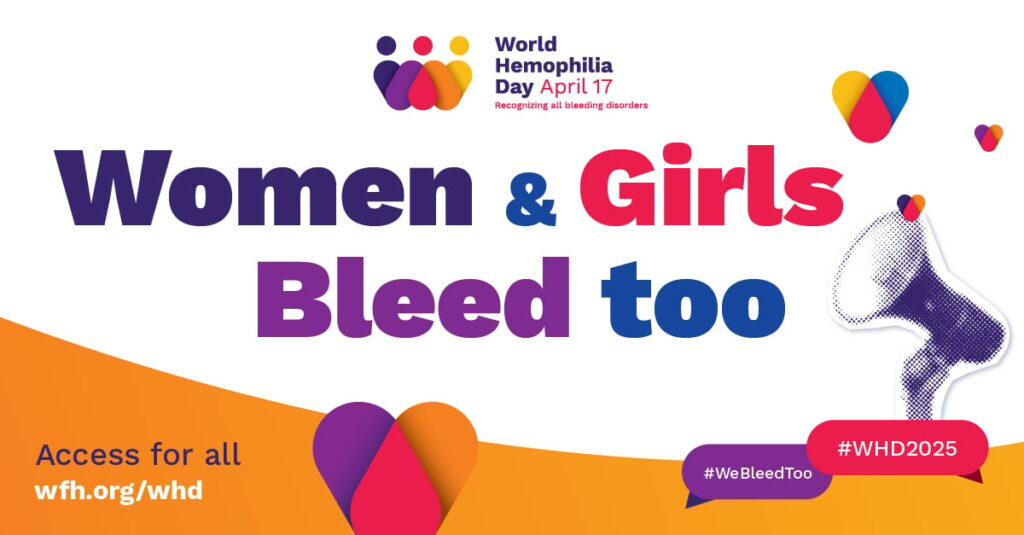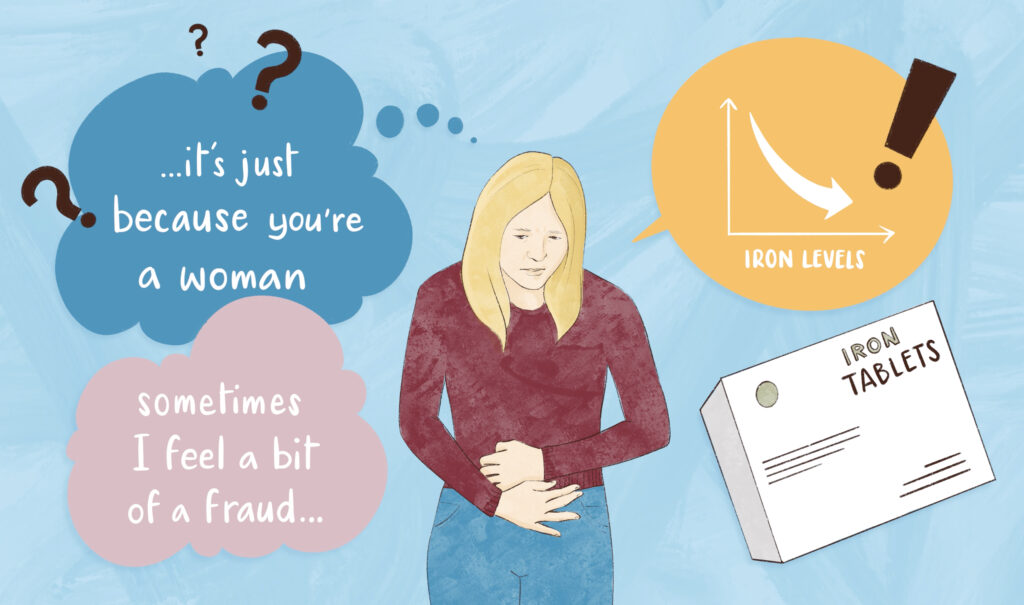Women and girls bleed too – “Whatever they do for a male, do it for her”

17th April is World Hemophilia Day, and the theme for 2025 is “Women and Girls Bleed Too”.
The disparities in diagnosis, treatment and care experienced by women and girls with bleeding disorders, in comparison to men and boys, is something we’re familiar with. Our Cinderella Study in 2020 surveyed the experience of women living with all kinds of bleeding disorders throughout the UK. Since then, through our ‘360’ studies, we’ve heard specifically from women living with Glanzmann thrombasthenia, Factor VII deficiency and von Willebrand disease.
Many of the women we’ve spoken with have shared stories of delayed diagnosis, difficulties accessing treatment, and not being seriously by medical professionals. This affects both themselves and their daughters.
Why? Because they’re affected by a bleeding disorder – but they’re not male.
To highlight this issue, we share the story of Sarah (a pseudonym), the mother of a girl who has mild haemophilia.
Not just a male condition
Sarah’s daughter experienced bruising from her early days. When she began to walk, she wouldn’t put weight on one of her legs and complained that it hurt. Her husband has haemophilia and suspected a bleed – but voicing their concerns didn’t help.
“I’ve just been told, ‘No, it can’t be that. It can’t be that,’” Sarah told us. “It’s just the kind of stigma that haemophilia has always been a male condition. I think, unfortunately, if you’re brought up thinking that that’s the case – and there’s not much information that women can be affected – I think you just carry on thinking that can’t that can’t happen.”
Sarah knows that her daughter’s factor levels are low, but she doesn’t have access to treatment.
She told us: “I do wonder, if she was male and I took her to an appointment, would it be different? That’s the thing I always find… I don’t know if it would be a different scenario, but I think that potentially it could be.”
Time to be taken seriously
Despite presenting at A&E with bleeding symptoms, and taking her daughter to see their local GP, Sarah says she doesn’t think she’s ever been taken seriously when suggesting that her daughter is affected by haemophilia. She’s still young, but Sarah has concerns about what will happen when her daughter starts her periods. Understandably, she wants to make sure she’s as prepared as possible. However, she says this is difficult, not only due to a general lack of information and support, but also with respect to knowing she can access treatment.
“What would they do if she was male?” Sarah asked. “Whatever they would do if she was male, do it for her. I don’t know if it would be a physio, I don’t know if it would be medication, I don’t know if it would be what – but just do the same thing. It’s quite simple when you put it like that.”
Advocacy and anxiety
Sarah constantly advocates for her daughter, but the difficulties she encounters also take its toll on her as a mother.
“It is really hard. It does really get to me sometimes. I do kind of bury it down, but sometimes it is really tough,” she told us.
“I feel like I go on a rollercoaster – I’m really passionate about it and I want to fight for it and try and get my daughter heard, then feel just so deflated and think I can’t do this anymore. I can’t keep going to appointments and them not believing or not listening or not doing this. Then you get this other burst and you try again – but it’s quite hard to keep picking yourself up after every knock.”
Equitable access to treatment and care
Sarah’s daughter has haemophilia.
If you have haemophilia and you menstruate, you’re almost guaranteed to bleed significantly every time you have a period.
Even with relatively “normal” factor levels, women and girls who carry the haemophilia gene can experience bleeding symptoms.
It’s just not true that women and girls aren’t affected by bleeding disorders – they are. And they deserve equitable access to treatment and care.
Women and girls bleed too.
With thanks to Sarah and all the women who have shared their own and their daughters’ stories with us
More on “Women and girls bleed too”
You can find out more about this year’s World Hemophilia Day theme via the World Federation of Hemophilia website
If you’d like to know more about the experience of women and girls who live with a bleeding disorder, the Haemnet blog has many other stories to explore:
- Bruises, bleeds and babies – The Cinderella stories
- It’s not all about boys
- “I didn’t know I was a carrier”
- The need to change perception
- Yes, haemophilia affects women too
- Women and Glanzmann Thrombasthenia
- Living a new normal: a mum’s experience of Type 3 Von Willebrand disease
About the author
Kathryn Jenner is Communications and Community Manager at Haemnet Ltd.


